Tillingham Winery is a biodynamically managed vineyard and winery with a restaurant and rooms incorporated into the old and new farmyard buildings. A grid pattern of gravel beds echoes the surrounding vineyard and features naturalistic planting of perennials and grasses that soften the uncompromisingly agricultural appearance of the farmyard.
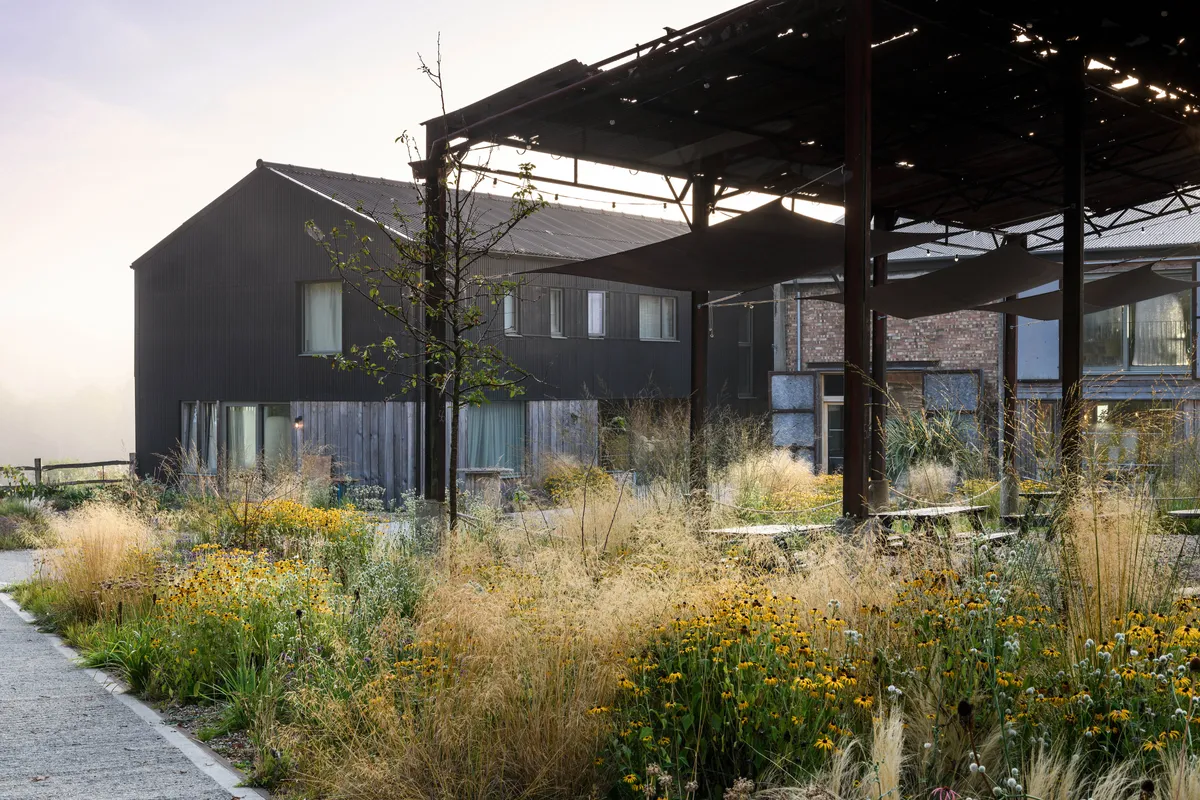
Ben Walgate, the man behind this enterprise, moved to Tillingham as its tenant in 2019 and set about establishing the vineyard with the backing of his landlords. He had grown up in farming but instead of returning home after university he travelled round the Mediterranean and found himself taking a detour into winemaking. He was much inspired by the sensitivity to nature that was practised in the organic vineyards of Europe and when his father moved the family farm in Lincolnshire over to a regenerative management system, Ben was keen to do something similar at Tillingham. Regenerative farming involves moving away from artificial fertilisers, minimising soil disturbance, increasing crop diversity and keeping living roots in the ground as much as possible. Biodynamic principles are followed to make natural wines free of any additives.
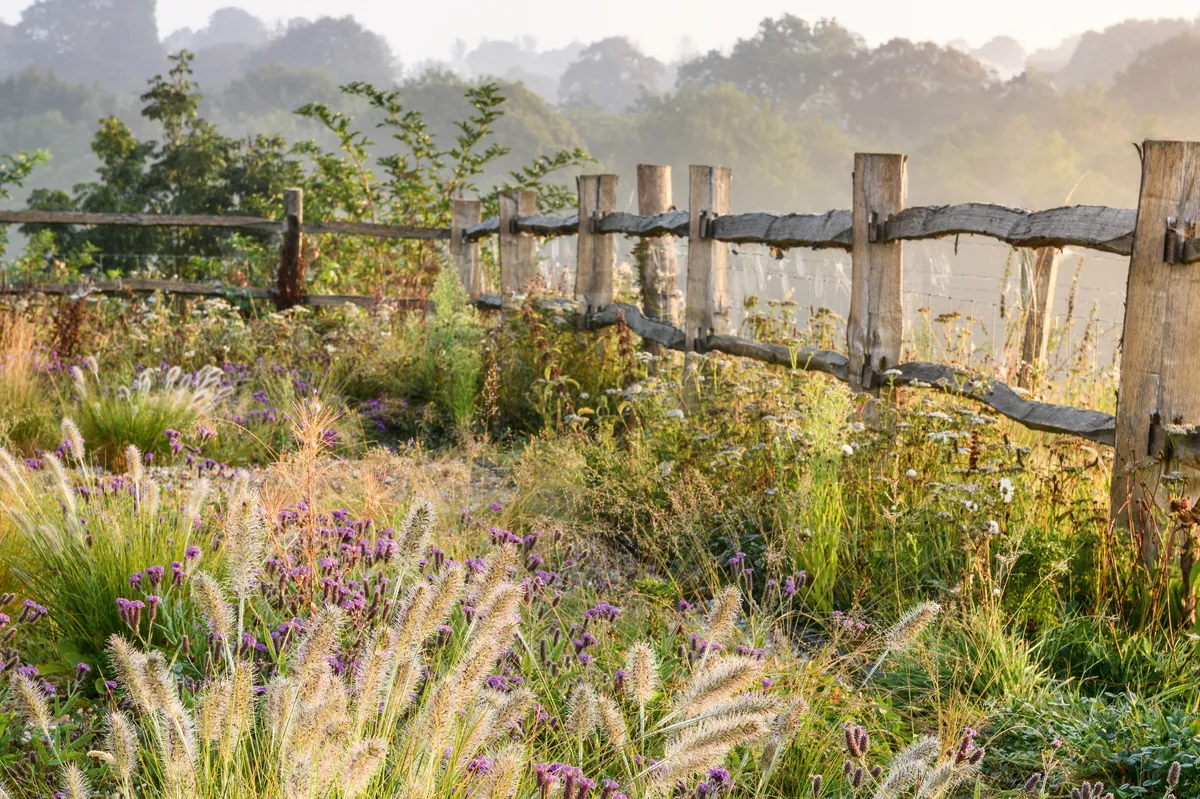
“I don’t want the farm to be either manicured or neglected, but balanced and healthy,” he explains. “The farm’s biodiversity and soil health won’t be restored in a day – that’s a long-term thing – but we are making a start.” As part of this holistic approach Ben asked local landscape architect and garden designer, Marian Boswall, to work with the architects who were converting the buildings and make a garden that was sympathetic to the Tillingham ethos.
A champion of sustainable and regenerative gardening, Marian was a perfect choice. “I became involved before Tillingham opened,” says Marian. “It was a nice challenge – there was a very low budget and the brief was for it to be very low to no maintenance and for the planting to be as naturalistic as possible.” She was also asked to create the paths and planting that lead visitors from the car park to the farmyard as well as a terrace that overlooks the vineyards with views to the historic town of Rye.

Originally, the plan had been for the Dutch barn to be demolished, but Marian championed its retention as a focal point in the farmyard, around which she designed the surrounding planting. The barn has now become an iconic element at Tillingham and has recently had its roof replaced with something less rustic but more weatherproof– which must add to the comfort of the diners below.
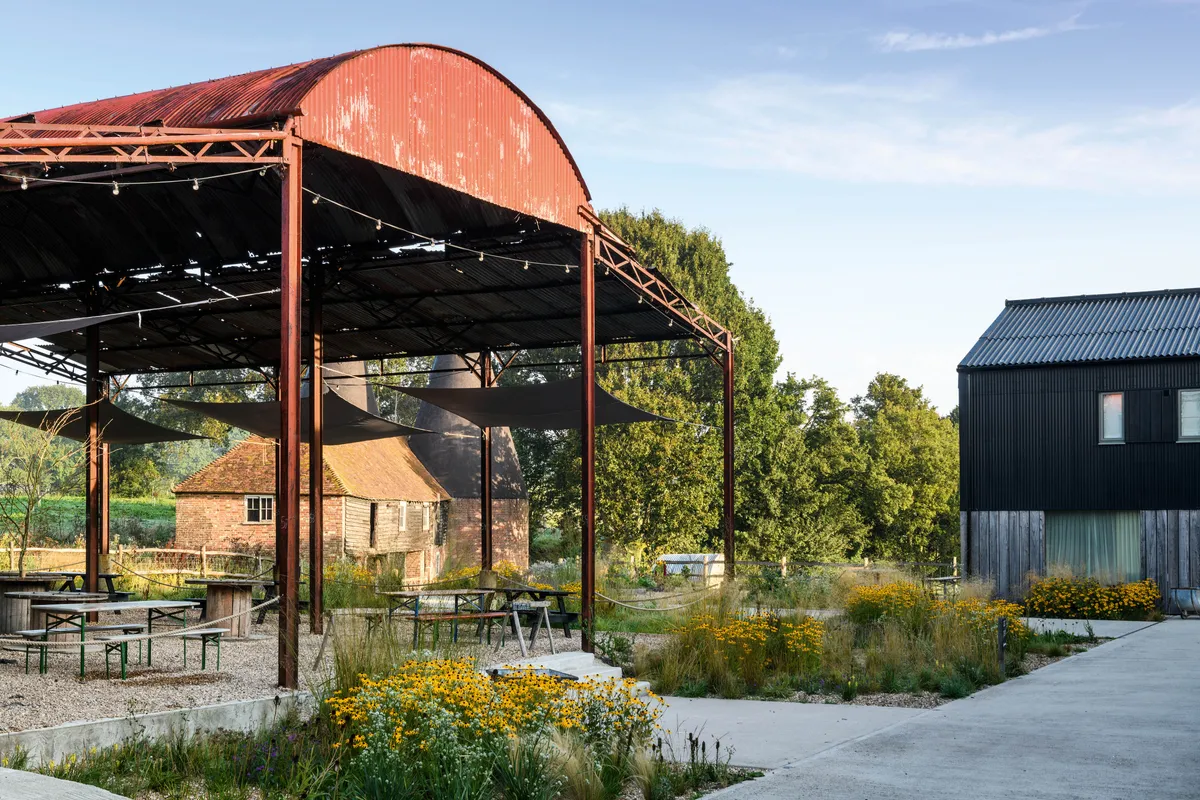
Marian had no desire to prettify the farmyard. “I love the wide, tamped-concrete paths, it feels as if a tractor might come down any moment.” Paying tribute to its past, cobbles were incorporated at places where there would have been heavy wear, and bits of railway track recall that farm equipment often ran on tramlines. Wherever possible things were repurposed or reused. Old galvanised tanks and feed wagons are used as planters, as are large concrete rings that were left over from a drainage project on the farm.

Marian was guided by the flora and fauna of the Weald when choosing the plants, and mainly chose near-natives that would work harmoniously with the surrounding farm and countryside. “There was no budget for anything like soil, and planting into the heavily compacted Wealden clay was impossible. All we could do was bring in local shingle and spread it to a depth of 20cm on top of the clay. The plants came either unpotted or in 9cm pots and we put them straight into the shingle – which was no easy task– so that the base of the rootballs nearly touched the heavy clay soil. This allowed them to send roots down, but avoids problems with ‘wet feet’ when the clay becomes waterlogged.
All the planting was done during a period of wet weather that helped them to establish and, other than the trees, they have not been watered since. Three years on, the majority of the original plants have established well and are spreading happily. Verbena rigida creates waves of purple among a sea of grasses including Sporobolus heterolepis, which is used in all areas, while Rudbeckia fulgida var. deamii and Kniphofia ‘Bees Lemon’ add yellows to the palette.
“It is definitely a garden that is at its peak in summer and early autumn,” says Marian. “But because the plants are grown hard they stand well and overwinter in beautiful shades and textures of brown until spring when they are cut right back.”
Asked if she is happy with the way the garden has evolved, Marian regards Tillingham holistically rather than simply as a garden design project. “It’s wonderful that it’s a space that is really alive,” she says. “The usual fate of redundant farm buildings is to become office units, or be used for light industry, but at Tillingham Ben has adopted the healing ethos. People are invited to come and eat local food and drink natural wines, to stay in lovely countryside, participate in courses and use it as a community space. Above all, it is a place that works for both the people and the wildlife.”
8 Key Plants at Tillingham
Echinacea pallida
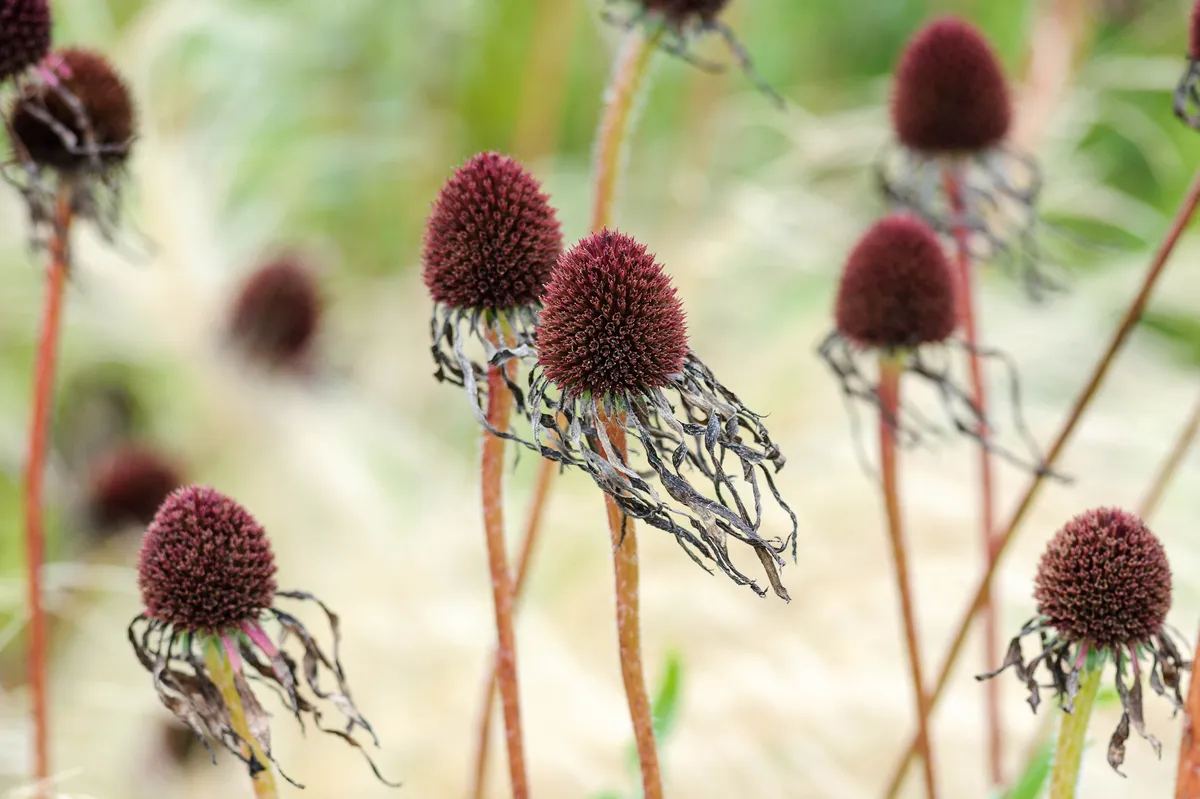
Offers pink flowers from July to September. Although it has struggled to establish here in the heavy clay soil it makes an impact even in its senescence. 1.25m x 50cm. RHS H5, USDA 3a-10b †
Eryngium yuccifolium

A clump-forming evergreen perennial with sword-like leaves and very tall, branched flowering stems carrying clusters of cone-like flowers. 2.5m x 1.5m. RHS H4, USDA 3a-8b.
Allium ‘Summer Beauty’
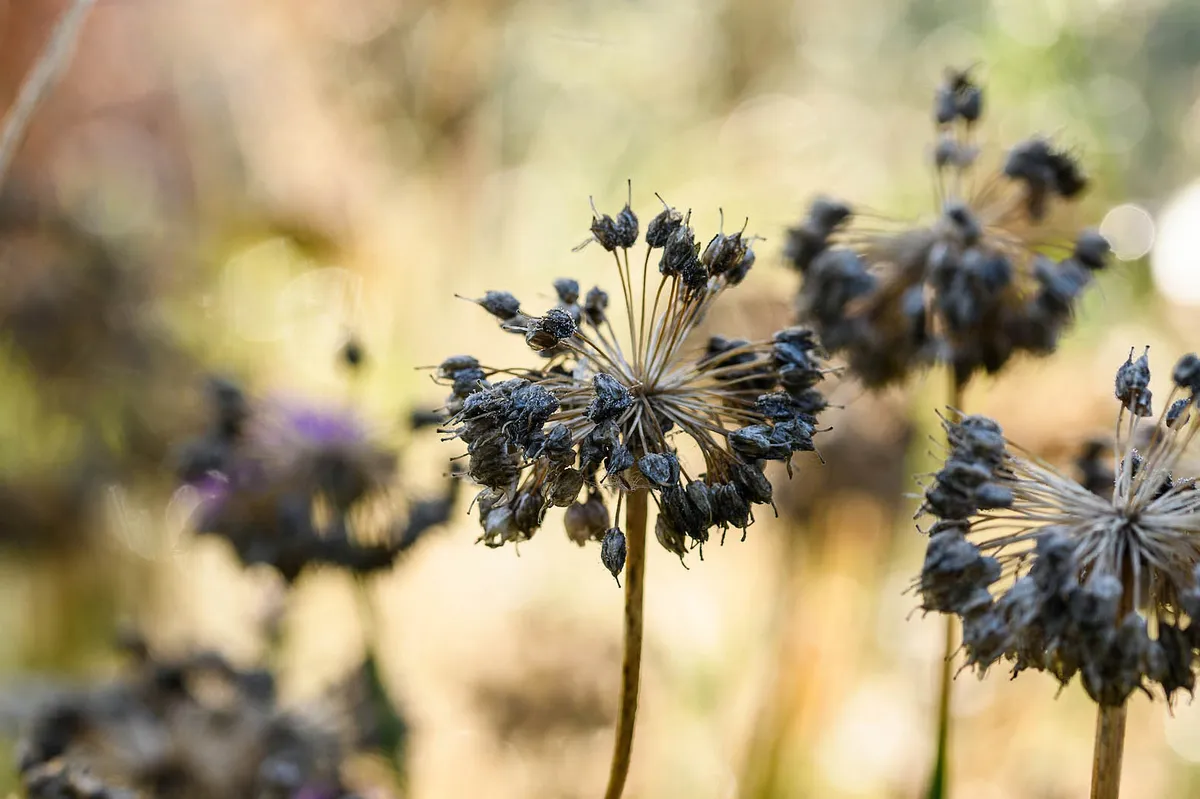
A bulbous perennial with strap-like leaves that bears rounded heads of lilac flowers that persist to form attractive seedheads. 50cm x 25cm. RHS H6, USDA 5a-8b
Liatris spicata
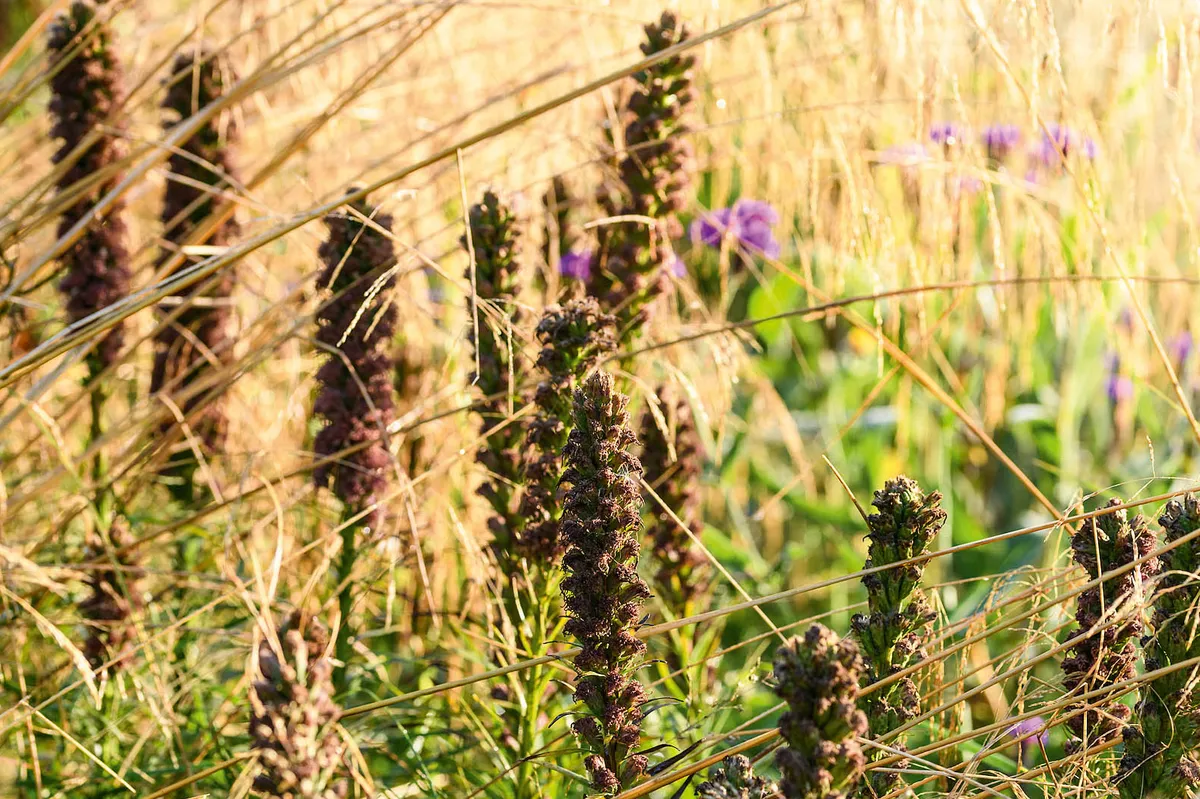
Upright bottle-brush flower spikes in shades of purplishpink that open from the top down in late summer and autumn, leaving
useful seedheads. 50cm-1m x 50cm. RHS H7, USDA 3a-8b.
Pennisetum alopecuroides ‘Hameln’
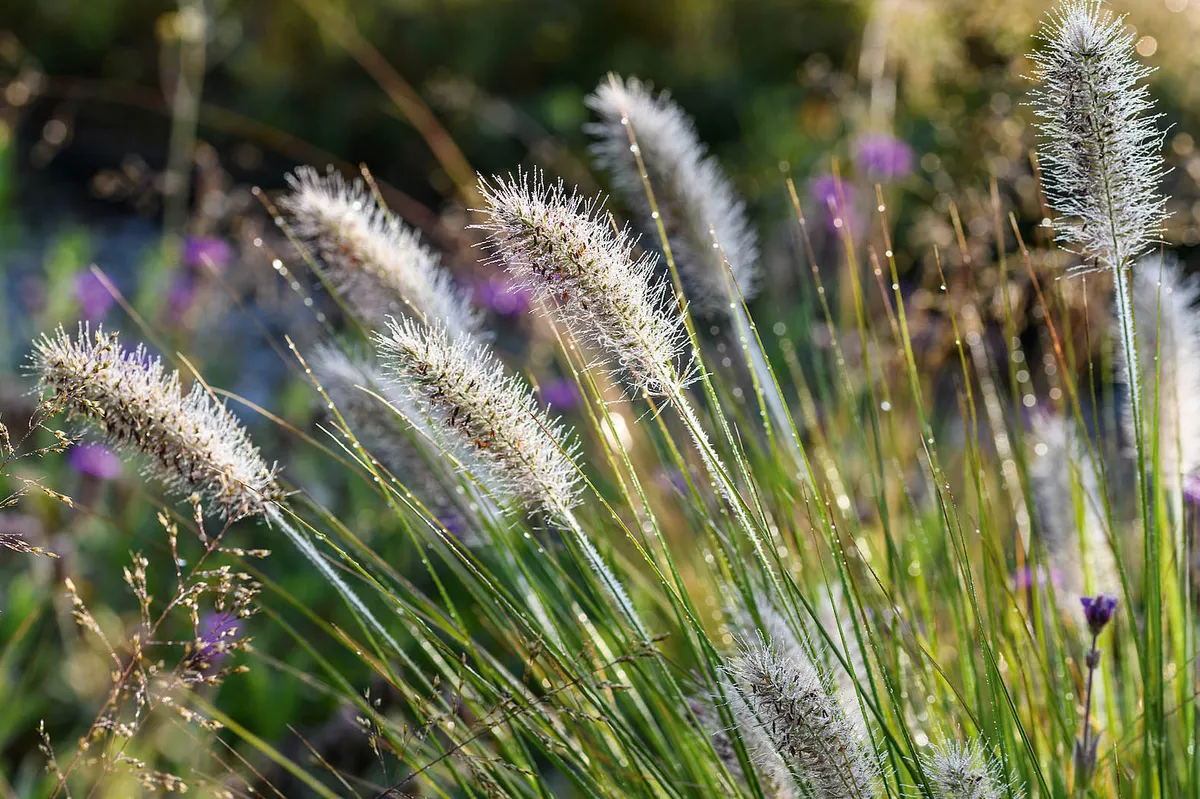
A compact perennial grass that forms a low mound and produces long-lasting, brush-like flowers in late summer. 1.2m x 1m. AGM*. RHS H3, USDA 5a-9b.
Rudbeckia fulgida var. deamii
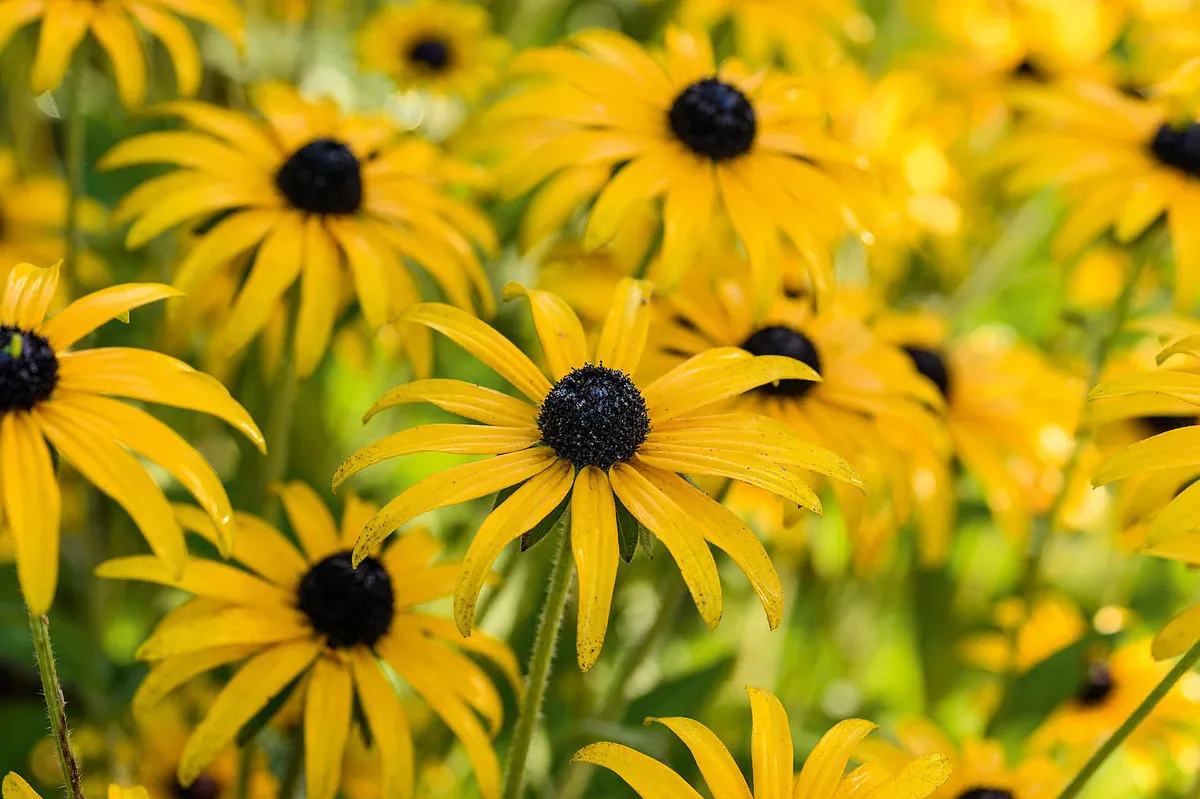
An upright clump-forming perennial with bright yellow, daisy-like flowers from late summer to mid autumn. 60cm x 45cm. AGM. RHS H6, USDA 3a-9b.
Sporobolus heterolepis

This perennial grass throws up airy sprays of dainty flowers in late summer and early autumn, just as its dense clumps of mid-green leaves turn yellow and orange, and then pale brown. 50cm-1m x 50cm-1m. RHS H7, USDA 3a-9b.
Verbena rigida
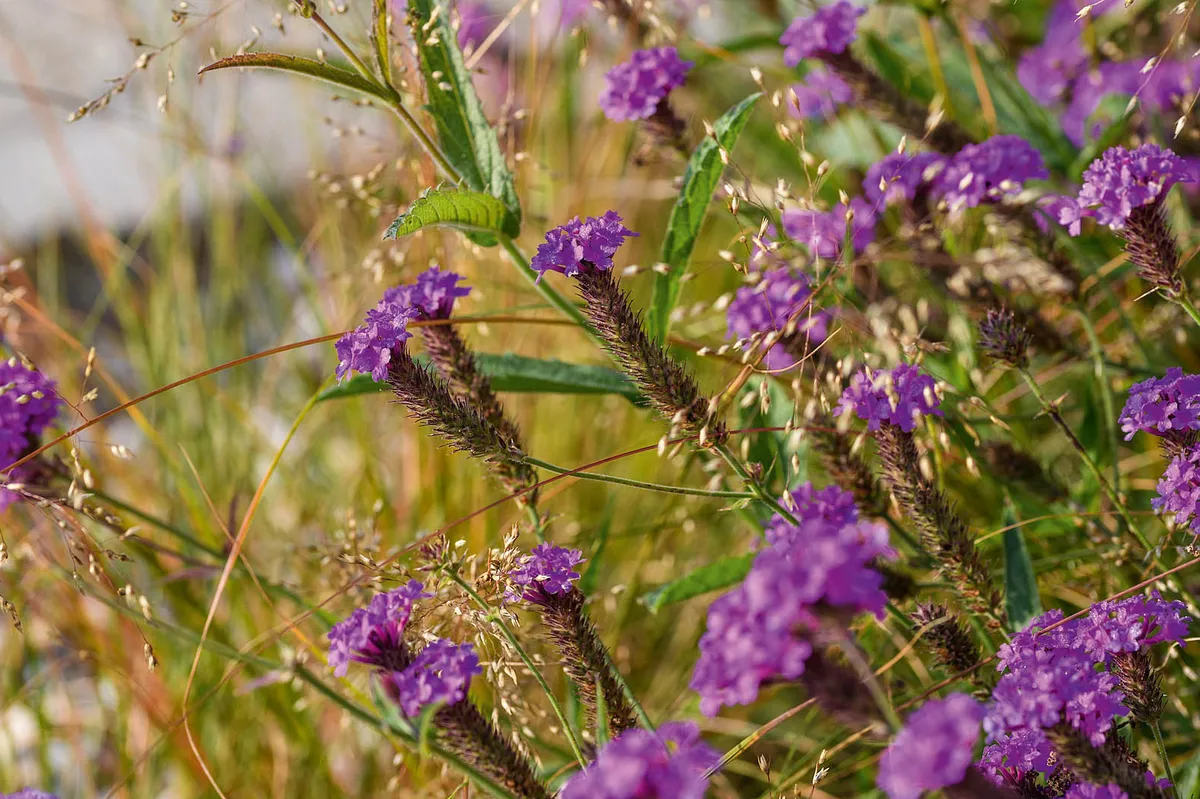
Grows well in dry situations and its vivid purple flowers make it a good alternative to Verbena bonariensis in windy positions. Can be grown as an annual in colder regions. 60cm x 40cm. RHS H3.
USEFUL INFORMATION
Address Dew Farm, Dew Lane, Peasmarsh, Rye, East Sussex TN31 6XD. Tel 01797 208226. Web tillingham.com Open See website for details